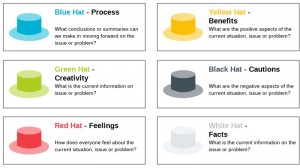Written by : Dyah Ayu.
Edited by: Entusiastik
The ultimate objective of teaching English is to enable students to use the language for communications, especially in speaking. Therefore, it is necessary to the teacher to provide many learning activities to support the students’ skills and competence in speaking. Activities used by teachers should be interesting and can engage the students. Here are some ideas for teaching speaking skills.
Show and Tell
Show and Tell is a strategy is which often used for teaching young learners, however, it is still possible to use this for teenager or adult learners. Through this activity, learners will make use of objects or pictures to talk about ideas they have about them. There are several steps in running the Show and Tell, which are:
- At certain times, students are asked to bring favorite objects or pictures to be shown and told in front of the class.
- The teacher gives the student a chance to talk about objects brought/prepared from home
- Engage other students by having them ask questions to students who perform
For example: with the topic of family, teacher asks the students to bring a photo of their sister or brother then they talk about their siblings, and the other students prepare some questions related to introduction family.
Storytelling
Stories are the heart of communication. In real life, people tell and hear stories from their families or friends. Hence, it is a good idea to have the students read a story, tell a story, or even make up a story based on their experiences or imagination. Teachers could also follow up this activity by having the students write the summary of stories they tell or hear from their classmates, or act the favorite stories in a role play.
Home Reporter
When students are at home, it does not mean that they cannot learn or practice their speaking skills. Teachers can ask their students to report any activities they have at home, describe their house, or talk about their favorite objects at home. Give clear instruction on what language structure or topic to focus on, for example, the students should describe their favorite objects in terms of when they got them, why they got them, what they do with them, why they are so important to them and whether there are any stories associated with them.
Surveys
Surveys can be used to get students interviewing each other. There are many activities from English massive learning module to use, for example, in parts heading “Find someone who”, teachers can ask students to mingle and find specific information from their classmates. This will make the students enthusiastic and actively speak during class time. Plus, they might find unique facts about their classmates.
Games
Games are fun challenge activities for students. Here are some games that can be used in teaching speaking.
1. Following Directions
In this game, each student in the pair draws things from the prepared picture, and keep their paper shielded from the eyes of their pair. Then, the student asks their pair to draw what they see in the picture for example, when they got a picture about park ad there is a bench in the picture the students can asks their pair to draw it. The goal of this game is for each partner to replicate the other’s drawing going by these spoken directions.
2. Games! Yes, No
Yes – No! is a game where the only two words that students aren’t allowed to say -namely yes and no. Pair students off and play. When a student loses, he or she is out and the winning partner is paired with another winning partner. In this way, you can create a tournament of yes, no.
Teachers may give students some pictures; the students will take one picture and wait for their pair to ask about the picture for example: is it an animal? Is it a thing?
Make sure the students have learned about Yes-No question structure and are confident in using the structure.
3. Guess Who
Guess who is a good game to have the students practice asking questions. Sometimes, teachers do not pay enough attention to train the students to ask questions, as they put greater focus on making the students answering questions. Through this activity, students will have a chance to both ask and answrr questions with their pair. For example, students draw the name of a famous person out of a hat (you’ll need to prepare these in advance!) and their partner tries to guess who’s on the paper by asking a series of questions.
Reference:
https://www.fluentu.com/blog/educator-english/esl-speaking-activities-for-adults/



.png)
.JPG)
